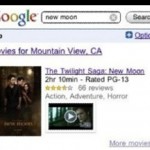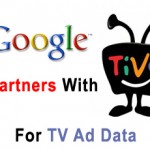 San Francisco — Barely days after it announced plans to gobble up Teracent, an online display advertising company, Google on Wednesday offered a glimpse on its blog of the current and still developing many forms of advertising we can expect to see in its search results. Google has now introduced a new feature in search ads, making it available to all U.S. Advertisers, which include videos and maps as well as images and price comparison features for specific products.
San Francisco — Barely days after it announced plans to gobble up Teracent, an online display advertising company, Google on Wednesday offered a glimpse on its blog of the current and still developing many forms of advertising we can expect to see in its search results. Google has now introduced a new feature in search ads, making it available to all U.S. Advertisers, which include videos and maps as well as images and price comparison features for specific products.
Product extensions allows images to be exhibited with your ad. However, unlike Product Listing Ads, which are available on a Cost-Per-Action (CPA) basis, product extensions provides more control and is available on a Cost-Per-Click (CPC) basis.

For example, product extensions will only be activated for ads by keywords set up in your campaign. And you can control which products appear in an ad. With Product Listing Ads, Google chooses these options for advertisers. Moreover, the ads include a plusbox, which expands the ad. Advertisers will not be charged when a user simply clicks the plusbox — only when a user actually clicks through to the site.
Google describes that the new ad formats have been introduced to offer a more effective means of receiving information from sponsored search results. Susan Wojcicki at the Official Google Blog states: “To provide a better search ads experience, we have been developing and testing a variety of new ad formats. These formats are focused on giving you the information you need, while retaining what you love about Google advertising: that the ads are relevant and useful.”
One elementary upgrade to text ads allows the return additional sub-links to specific sections of the advertiser’s site, like “Hotels” or “Flights” on the Priceline site.
Additionally, Google is already experimenting and developing ads that feature videos. For example, if a user searches for a movie coming out soon or just released, an ad for the movie may include the movie’s trailer so that, depending on the original intention of the search, the user may never have to even leave the search results page.
Google Maps too offers an immense opportunity for supplemental ad results. Underneath a standard text ad for a certain business, like “Fillmore Florist,” one might see a small clip of a Google Maps page highlighting the location of said business. Similarly, ads for chain restaurants or business will display the multiple locations in one’s area, if applicable.
Take a look at some examples:





For U.S. users, many of these ad formats have already been in available. Online merchants desiring to display their inventory will also have an ad format which allows for comparison shopping.
While the company walks a fine line between delivering relevant ads and overly-flashy ads that hamper its search results, Google appears to be attempting to assure its user-base that the latter is not to be feared.
According to Wojcicki, Google’s pursuit for the ultimate search experience is ongoing. Wojcicki explains: “While we experiment with new formats, we will remain loyal to our core principle: that getting the right ad to the right person at the right time matters. As we continue to think up innovative ways to give you the information you want, you are likely to see even more ad formats until we pinpoint the most useful, relevant and engaging ones. We will keep trying new things until we discover the ‘perfect’ ads that improve your overall search experience.”
This blog post may just be Google’s way of saying that it has always been interested in alternative forms of advertising, long before the Teracent acquisition was cemented. In order to use product extensions, go to your Google Merchant Account and add your AdWords account ID. Then, under the “Campaign Settings” in AdWords, look for “Ad Extensions” and choose “Use product images and information from my Google Merchant Center account.”
Google says you will probably witness even more formats become visible with search results in the future. This will occur until they figure out which ones are most useful, relevant, and engaging. Expect a lot of new things.


